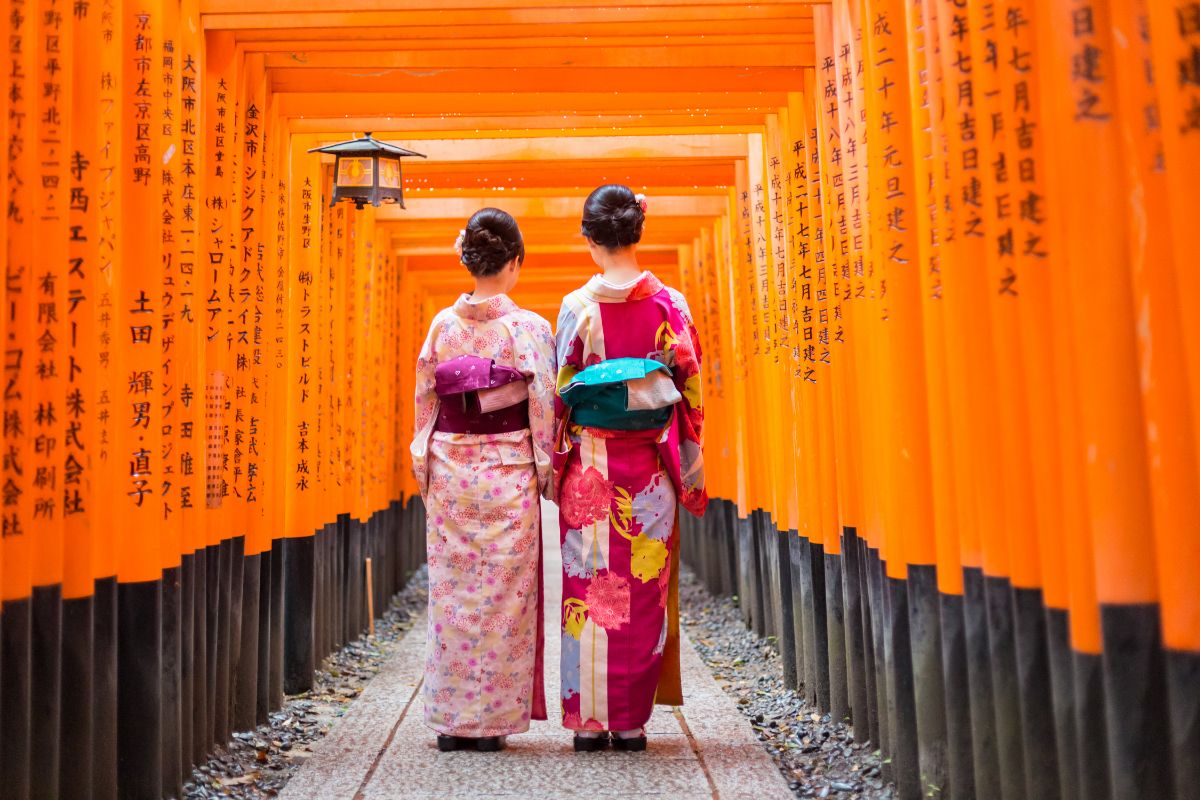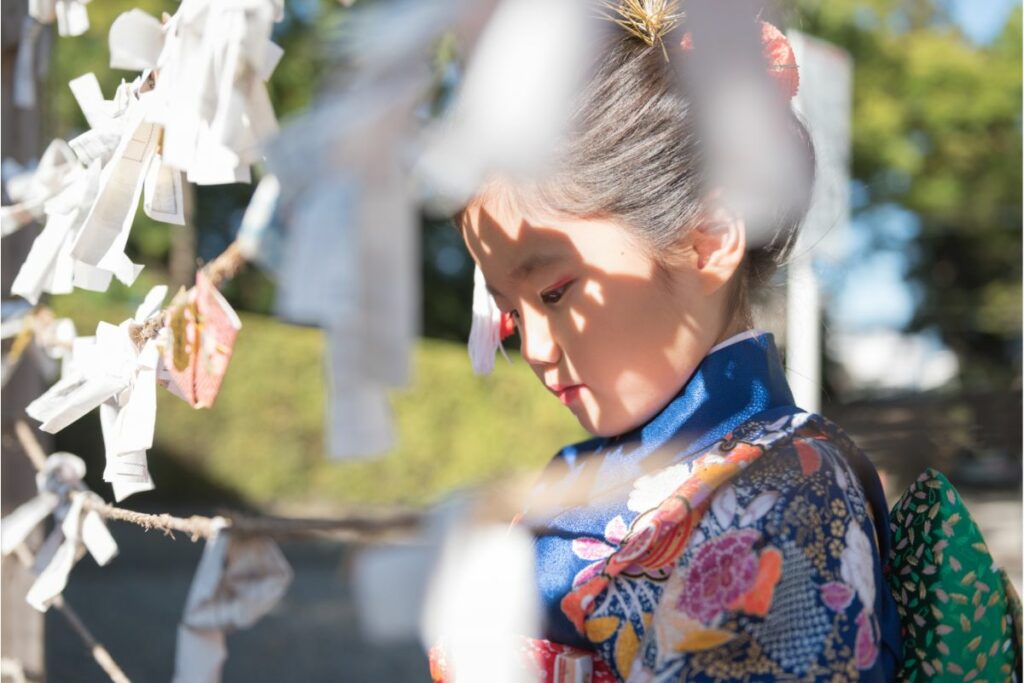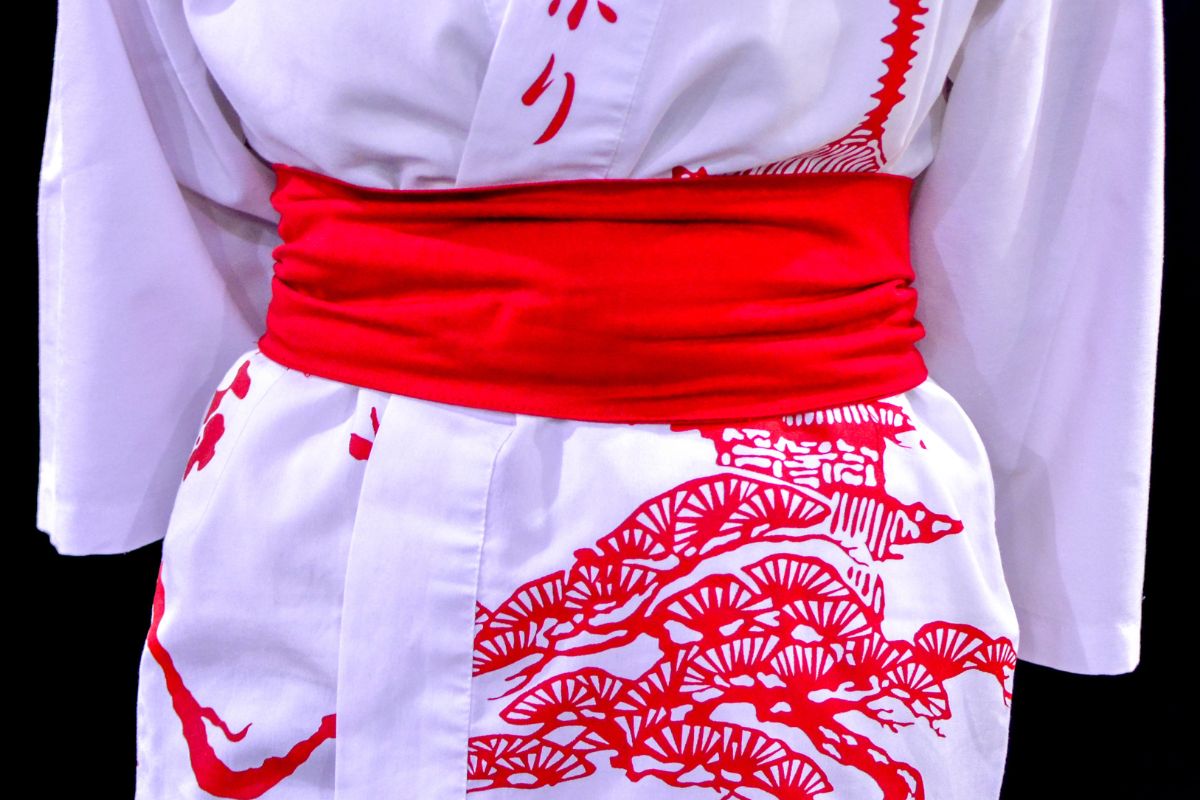As the warmer months creep in, you should be bringing out a kimono. The lightweight garment originates from Japan and is ideal for wearing in summer.
Your typical denim jacket, cardigan, or sweater can remain in the wardrobe as the light and breezy kimono can be a fashion statement. Wearing a kimono feels effortless.

A kimono’s flowing and open style makes it easy to wear though you should wear the traditional Japanese garments that come with it.
Here’s what to wear with a kimono.
What Is A Kimono?
A kimono should be a failsafe in your wardrobe, a light one for summer festivals and one with heavier fabrics which is ideal to be worn in winter. The traditional Japanese piece of clothing is essentially a t-shaped robe that comes with boxy sleeves.
The most common material a kimono is made from is silk though you can also find varieties from satin, linen, and crepe. You should also expect bright and colorful designs including accents and motifs that can really show off your style.
In Japan, the kimono can hold a level of significance and symbolism based on the design. Some can even demonstrate the wearer’s spiritual beliefs and their class.
You could also expect to see one at a formal event such as a wedding or even a funeral. They are traditionally worn with a hadajuban and also a koshimaki which go directly onto the naked skin. Another garment, known as a nagajuban goes on top of those.
The kimono first appeared in Japan during the Heian period around 794 AD when it was worn with Hakama pants from China. One of the main reasons for its development was how generous, roomy, and comfortable the kimono was which has seen it maintain its popularity.
The garment was officially named the kimono during the Meiji period and remained popular through both the Kamakura and Edo eras up to today.
The garment’s versatility remains unparalleled though you would be advised to treat the garment with the utmost care and respect.
What To Wear With A Kimono
To properly wear a kimono, you need to also seek out some other garments. Some of these are required while others are considered merely optional. Traditionally, kimonos were worn without undergarments though those days are long gone.
For women, a susoyoke is essential and works as a slip to increase the comfort of a kimono, especially when the weather is warm. A hadajuban is also worn and acts rather like a thin layer of camisole.
There is also the nagajuban which is shorter than the kimono and resembles a thin robe made out of silk. Its hem and sleeves should not be visible underneath the kimono though a strip of the collar may be exposed (you can sew on your own for an alternate pattern).
Then there is the erishin which is a plastic strip you can slip underneath the collar for that extra neatness.
You may need two or three koshi-himo to tie the nagajuban and kimono closed shut. These thin sashes are made from cotton and should prove relatively inexpensive. There is also the korin belt which is more specific and can hold the kimono collar where it should be.
To further secure the kimono to the body and create that cylinder-esque figure, use a wide sash known as a data-jime where one goes on the kimono itself and another on the nagajuban.
The obi is that outer sash that can also be used as a belt when tied around a kimono. This is a garment where you can show off your style as it comes in various patterns as an accessory.
The more formal styles are known as maru obi and fukuru obi which typically come with metallic threads and flamboyant embroidery. The obi can prove tricky to tie so take your time practicing the technique.
Finally, there is the footwear that comes with wearing a kimono. On your feet should go a pair of tabi which are ankle-high and split-toe socks that originally came in white but you can now get them in a range of colors.
On top of the tabi can go zori which are flat Japanese footwear. You can also wear geta which are more informal and made from wood to create that clip-clopping sound when worn.

What The Difference Is Between A Yukata And A Kimono?
If you want to wear a kimono informally then look for a yukata. These can be worn when you go out in town or even at anime conventions and you do not need many accessories to wear one.
If you do visit Japan, you can expect to see this type of kimono quite often, especially with tourist dressing services.
While a kimono is considered quite formal, a yukata can be worn as loungewear or a bathrobe. You could find yourself getting quite comfortable in one for sleepwear, then again at meal times and even in the bathroom.
The yukata is also increasingly popular during summer due to the unlined cotton fabric, though you may also see youngsters wearing them during firework viewing festivals.
The main difference between the yukata and the kimono is the fabric. Yukatas are made from cotton fabric while a kimono is made from silk.
A further difference is their construction as the kimono is made with an inner lining while the yukata is created and sewn from a single layer of cotton fabric.
Final Thoughts
There are some special garments that go with a kimono that work towards its functionality and help express an individual’s sense of fashion. From the colorful obi outer sash to tabi ankle-high socks, both garments can show some style.
However, the susoyoke works as a slip and the nagajuban should be work as a robe underneath the kimono.
Frequently Asked Questions
Which Garment Iis Traditionally Worn With A Kimono?
While the kimono remains one of the most versatile garments you can have in your wardrobe, traditionally it is only worn with one other garment. During the years, an obi was traditionally paired with a kimono.
The obi is a broad sash then goes across the body when worn from the shoulder. Alongside the obi, you can expect a kimono to be traditionally worn with tabi socks and finished with a pair of zori sandals.
You can also expect a hadajuban and a koshmaki to be worn on your skin. These two layers are covered with the juban. Traditionally, a kimono was supposed to be worn without undergarments with the cloth of the hadajuban worn instead.
However, nowadays, you can wear undergarments with a kimono as a sign of changing times.
Is It Considered Disrespectful To Wear A Kimono When In Japan?
Though you should be careful not to offend many aspects of Japanese culture, wearing a kimono is favored amongst the locals. The wearing of one helps show an individual’s passion for this symbol of Japanese culture.
It should not be viewed as stealing Japanese culture, as long as you are diligently respectful while wearing it.
- 16 Best Websites To Watch Japanese Movies With English Subtitles - May 11, 2023
- Is ZIPAIR The Best Airline For Traveling To Japan? - May 11, 2023
- Ryu Murakami Vs Haruki Murakami – Which One Should You Read? - May 11, 2023








